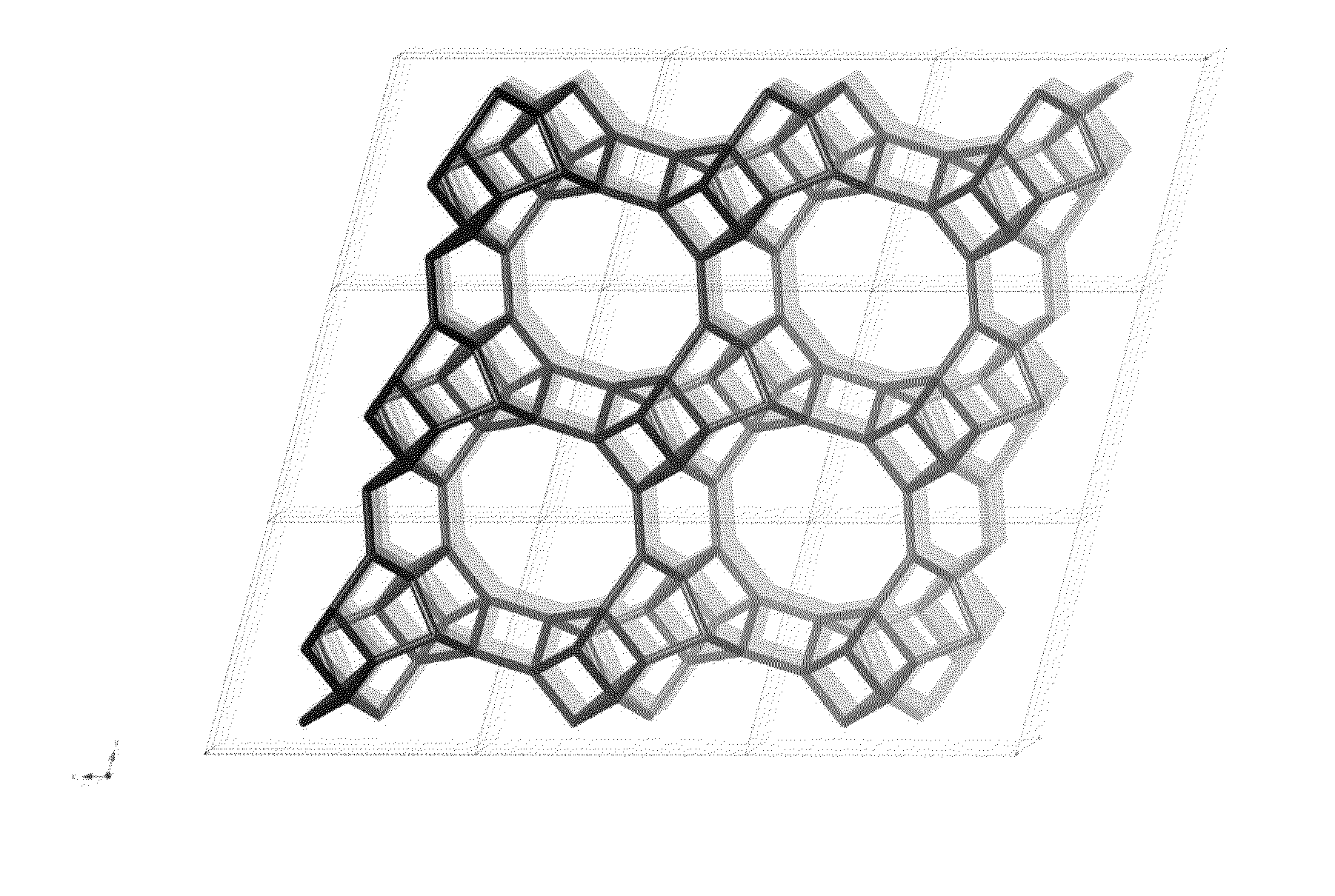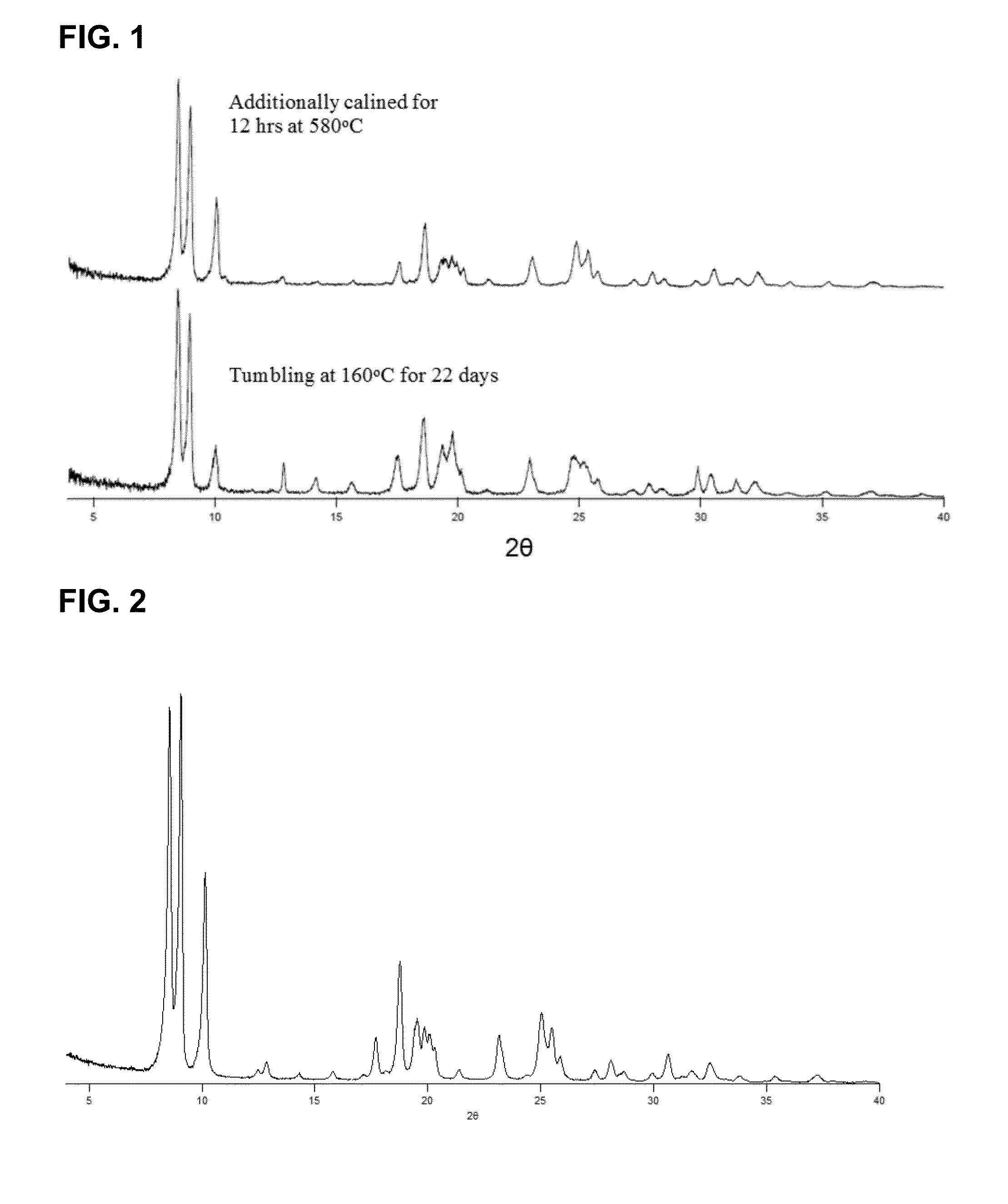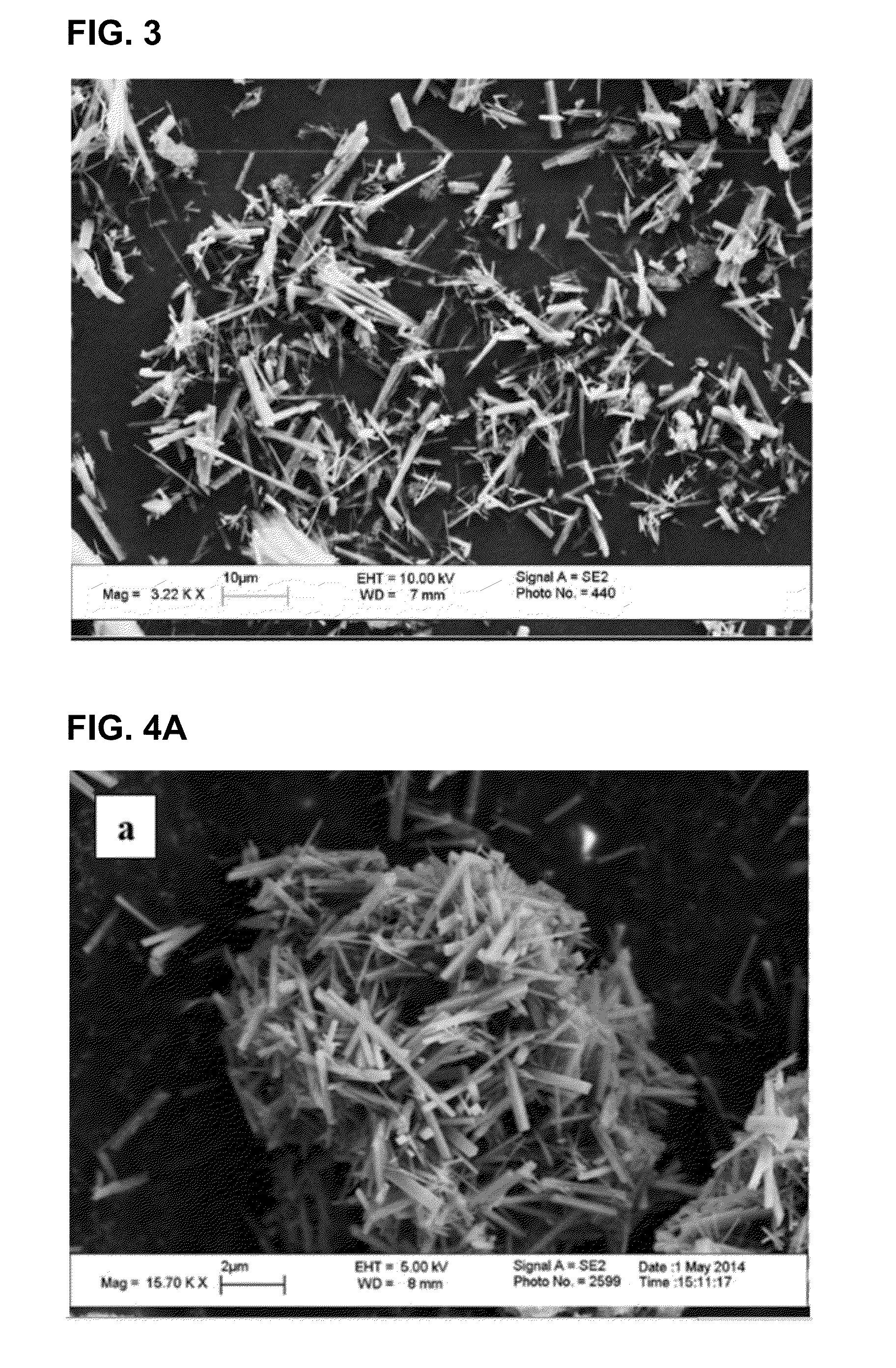Novel methods for producing crystalline microporous solids with the heu topology and compositions derived from the same
a technology of crystalline microporous solids and topology, which is applied in the direction of catalyst activation/preparation, hydrocarbon from oxygen organic compounds, hydrocarbon preparation catalysts, etc., can solve the problems of increasing the cost and complexity of preparation, boron with aluminum, and osda required more complex, etc., to achieve high si:al ratio, high purity, good activity
- Summary
- Abstract
- Description
- Claims
- Application Information
AI Technical Summary
Benefits of technology
Problems solved by technology
Method used
Image
Examples
embodiment 1
[0172]A process comprising hydrothermally treating a composition comprising:[0173](a) (i) at least one source of a silicon oxide, germanium oxide, or combination thereof; and optionally[0174](ii) at least one source of aluminum oxide, boron oxide, gallium oxide, hafnium oxide, iron oxide, tin oxide, titanium oxide, indium oxide, vanadium oxide, zirconium oxide, or combination or mixture thereof; and[0175](b) a linked pair of quaternary imidazolium cations of a structure:
under conditions effective to crystallize a crystalline microporous solid;[0176]wherein t is 3, 4, 5, or 6, preferably 4 or 5; and[0177]R is independently methyl or ethyl, preferably methyl, and n is independently 1, 2, or 3; said linked pair of quaternary imidazolium cations having associated fluoride or hydroxide ions, preferably substantially free of other halide counterions, i.e., bromide, chloride, or iodide. Subsets of this embodiment include those where (a) comprises only at least one source of a silicon oxide...
embodiment 2
[0178]The process of Embodiment 1, wherein the composition being hydrothermally treated comprises only (i) at least one source of silicon oxide or (ii) at least one form of silicon oxide and at least one source of aluminum oxide, for the preparation of crystalline microporous silicate and aluminosilicate solids, respectively.
embodiment 3
[0179]The process of Embodiment 1 or 2, wherein the linked pair of quaternary imidazolium cations has a structure:
where t is 3, 4, or 5.
PUM
| Property | Measurement | Unit |
|---|---|---|
| temperature | aaaaa | aaaaa |
| temperature | aaaaa | aaaaa |
| molar ratio | aaaaa | aaaaa |
Abstract
Description
Claims
Application Information
 Login to View More
Login to View More - R&D
- Intellectual Property
- Life Sciences
- Materials
- Tech Scout
- Unparalleled Data Quality
- Higher Quality Content
- 60% Fewer Hallucinations
Browse by: Latest US Patents, China's latest patents, Technical Efficacy Thesaurus, Application Domain, Technology Topic, Popular Technical Reports.
© 2025 PatSnap. All rights reserved.Legal|Privacy policy|Modern Slavery Act Transparency Statement|Sitemap|About US| Contact US: help@patsnap.com



